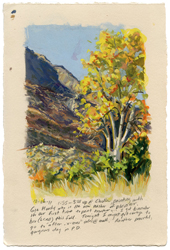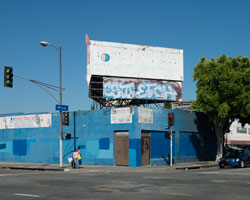January 18 - February 22, 2014
Reception: January 18, 2014 4-6PM
Gallery Talk: February 1, 10:30AM
RSVP by January 28
Craig Krull Gallery is pleased to announce representation of D.J. Hall with her first exhibition at the gallery, Into Plein Air, opening on January 18th. Recognized for her realist paintings of women in big sunglasses lounging poolside with drinks, cakes and magazines, Hall partially attributes her interest in these subjects to a sometimes difficult childhood that found moments of happiness in her birthday parties in the backyard and pool of her grandmother’s home. Yet her glamorous images are able to function as personal “illusions of reality” as well as social commentary on our image-conscious culture. Whereas male Pop-realist artists such as Ramos, Wesselman and Rosenquist employed the sexy, stylized female stereotypes that were a product of mass media, D.J. Hall examines actual women who can both satirize and revel in their fantasies. Her exhibition, Into Plein Air, combines these concepts with a more recent interest in sketching and painting in small notebooks outdoors. Gouaches and watercolors of flowers, desert hikes, Palm Springs Modernist buildings, and the canals of Venice (CA) suggest the pure pleasure of looking at what has come to be identified as the ideal of Southern California living. These fresh perceptions on paper are juxtaposed with a few larger triptychs on canvas. In these paintings, the chatty poolside parties of the past have given way to an introspective solitary swimmer in the center image, flanked by a sleek but empty Modernist home on the left, and flowers silhouetted against the sky on the right. On the occasion of this exhibition, the gallery has published a signed, limited edition facsimile of a D.J. Hall sketchbook.
John Humble began photographing the “paradoxes and ironies of Los Angeles” in 1979.
As a keen observer of this strange and extraordinary sprawl, he was one of eight photographers awarded a grant from the NEA to chronicle the city on its bicentennial.
Then in 2007, the Getty Museum mounted a mid-career retrospective entitled: A Place in the Sun: Photographs by John Humble, accompanied by a major monograph. After 30 years of photographing L.A., Humble says that he “pinpointed one street that captures the chaotic results of unplanned growth… and a population that reflects waves of continuous mass migration.” Starting at two beachfront luxury hotels and ending at the old Coca-Cola bottling plant, Pico Boulevard passes through vibrant Japanese, Iranian, Jewish, Russian, African American, Latino and Korean towns or neighborhoods, becoming a linear microcosm of L.A.’s remarkable cultural diversity. In this series of photographs, all made along Pico Boulevard, Humble aims to avoid any stylistic affectations, presenting the viewer with empirical evidence. He suggests that his images are “reminiscent of geological cross-sections or archeological excavations with layers of disparate natural and man-made elements compressed – a sampling of a visual strata.”

